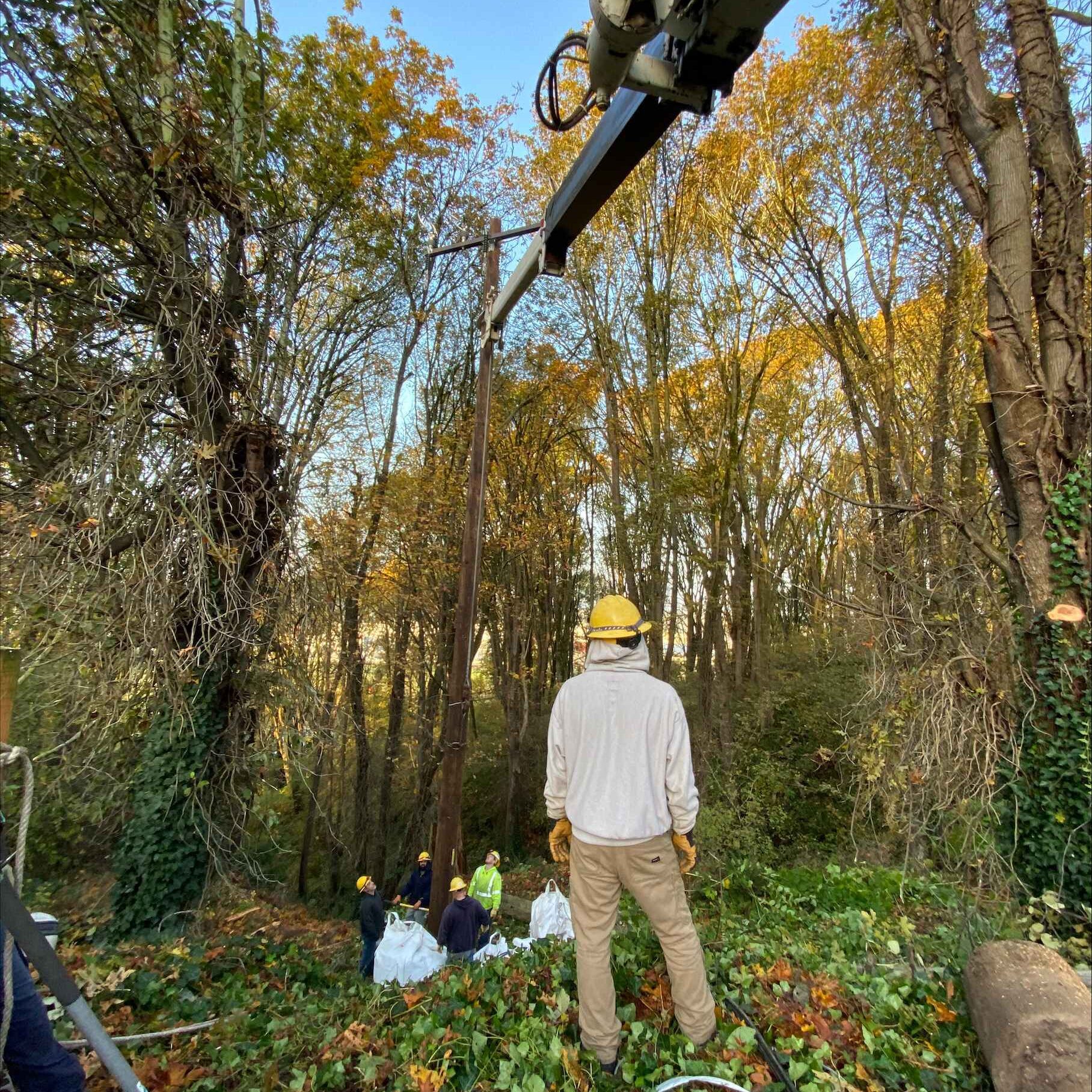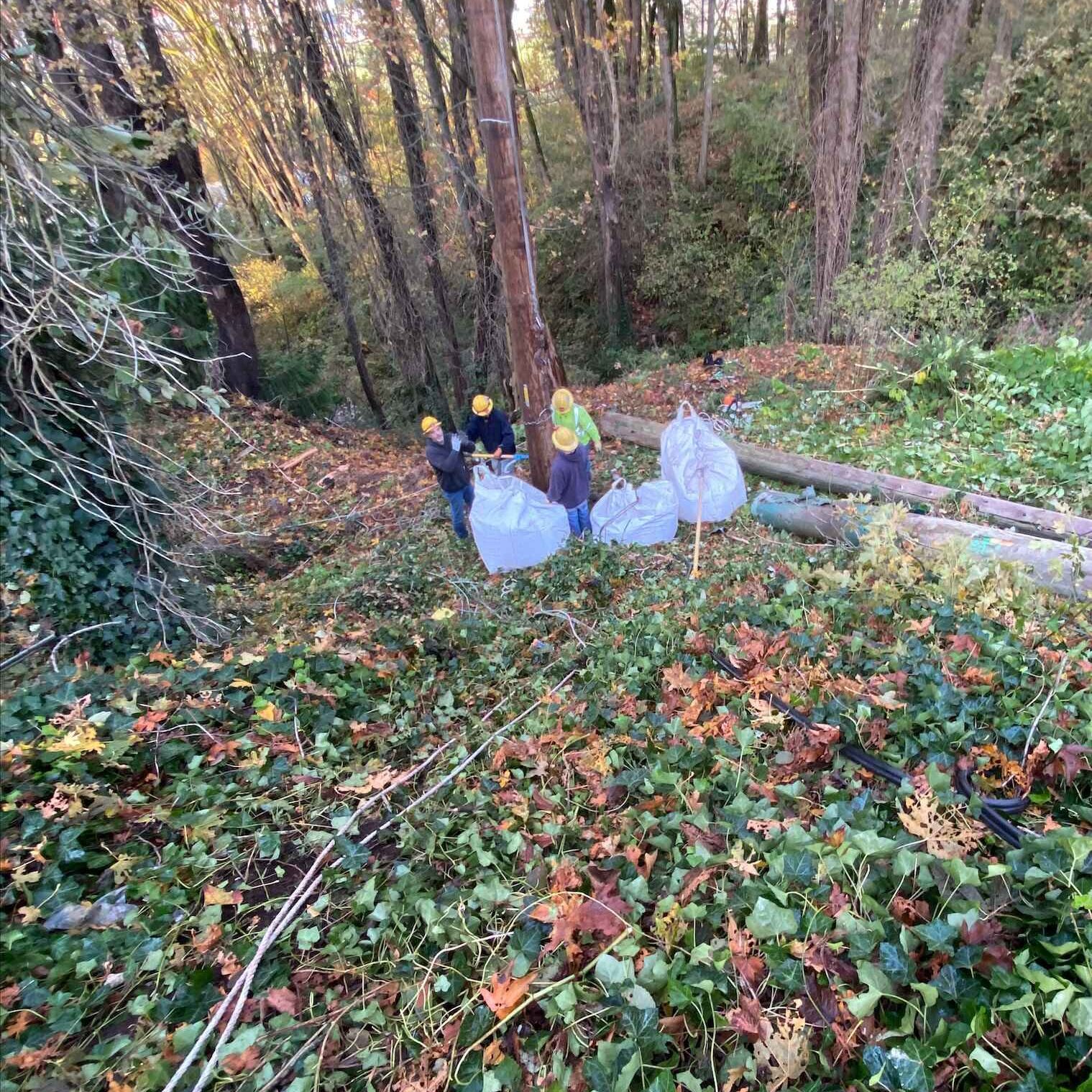
The months of October through February have a tendency to bring with them some unpredictable weather. Wind, snow, ice, and rain – sometimes all in the same week, like last Christmas – have been known to make an appearance and cause disruptions in power service. Let’s take a moment to talk about what causes an outage and how the hardworking City Light staff and crew members go about restoring power to our more than 493,000 business and residential customers.
What causes an outage?
Wind, precipitation and other weather conditions are often the leading culprits when it comes to power outages. Not only can they cause outages themselves, but they also tend to bring down tree limbs — and sometimes even whole trees — onto powerlines, disrupting service and wreaking havoc on roadways. Right now, trees are heavy with leaves, so the added weight allows branches to dip lower than normal touching power lines causing an outage.
Besides the usual natural causes, animal interference, vehicles sliding into poles, or simply a piece of equipment reaching the end of its life cycle and needing repairs or replacement are all common causes of outages.
How do we prioritize which outages to restore?
During major outage events or extreme weather conditions when there are multiple outages, crews are first dispatched to areas that pose an immediate safety threat. Next, they are sent to respond where there are emergency services and facilities critical to public health and safety like hospitals. Then crews will begin repairing areas that restore power to the largest number of customers and continue working until power has been restored to all customers.
Why can it take a long time to restore an outage?
Some outages are simple to fix while others are much more complex. City Light crews begin by first finding the source of the power outage. This may involve extensive searching; not all outages present themselves clearly. Once the source of the problem has been found, crews determine if additional staff, specialized teams, or multiple repairs are needed. Next, they ensure that power lines do not pose a threat to themselves or others, and then they begin working systematically to make necessary repairs to restore power as quickly and efficiently as possible.
At all times, the safety of our crews is our utmost priority. Working with electricity is dangerous even on a clear, sunny day. It is important to keep in mind that if conditions like icy roadways or high-speed wind gusts prevent our crews from working safely, there may be additional delays in getting your power restored. We will never endanger personnel for expediency.
Recently, an outage in South Beacon Hill lasted for more than 24 hours because it involved the replacement of multiple poles across both sides of a gulley. Our crews couldn’t reach the area with heavy equipment, so much of the work had to be done by hand, including digging the holes for pole placement. It was an impressive feat.
What is an “ETOR” and why do they change so much?
ETOR is the Estimated Time of Restoration. The most important word to remember is Estimated. When an outage first occurs, the ETOR is auto populated by our system. Initial ETORs are designed to inform you that we know your power is out and we’re working to resolve it.
Any ETOR changes made after the initial estimate are based on available information we have at any given time. Many factors drive actual restoration times, including access to the area, weather conditions, equipment needed, and getting the right crews onsite. The more information we have, like location or cause, the better we can estimate the time needed to make the necessary repairs.
However, there are times when we don’t have enough information and need to rely on our line service crews out in the field to investigate further. This can result in ETORs changing multiple times as an outage progresses. We know that can be frustrating to someone who is waiting for their lights to come back on, but rest assured we’re doing our best to get your power back on as quickly as we can.
We always endeavor to restore power as quickly as possible. We hope this sheds some light on the outage restoration process. For more information on how you can prepare for an outage, please visit https://www.seattle.gov/city-light/outages.


